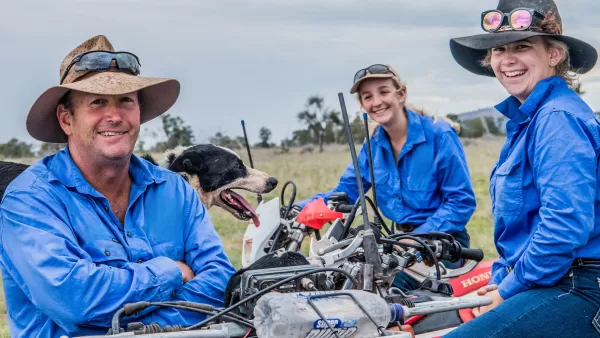Atherton Tablelands Dairy Farm
Energy Savings: 34% | Cost Savings: 12,763 | Capital Cost: 59,000 | CO2 Savings: 31tCO2-e | Project Status: Proposed
Industry:
Dairy
Location:
Atherton Tablelands
Pump Type:
Not applicable
Irrigation Type:
Not applicable
Technology:
Solar Power and Renewables, Refrigeration, Heating
The Dairy Farm, used 114,000 kWh per year in the most recent year before the audit at a cost of $36,633.
The farm’s electricity Tariff is Ergon’s Tariff 43, an obsolete tariff that is no longer available for large electricity users. It is likely that the dairy will be placed on a conventional, demand-based tariff such as Tariff 44 once a suitable electricity meter is installed.
The farm has two milking cycles per day for around 200 cows. The main consumers of electricity on site are the milk vats, vacuum pump and hot water systems using 56%, 12% and 11% of the farm’s electricity respectively.
The dairy has two electric cooling vats and two electric storage hot water systems.
Key Recommendations:
Condenser Upgrade
The audit identified that the air-cooled condenser units for the cooling system is corroded and at risk of failure, as well as found operating inefficiently. The compressor unit for the system is badly corroded so the heat exchange surface is not operating effectively.
The audit recommended a new condenser unit for the dairy with a de-superheater, which is a heat exchanger to capture waste heat from the condenser unit.
Heat Pump for Hot Water
Hot water is provided by two conventional electric storage hot water systems, one 250 litres and one 315 litres that provide around 600 litres of hot water at 70° for each milking shift with 14.4kW of heating capacity.
The energy audit has recommended the installation of a new heat pump to preheat the hot water to 60°C so that the electric storage hot water systems are only required to ‘top up’ the required heat of 70°C.
Installing a heat pump to reduce the load on the hot water systems would reduce the electricity consumption by nearly 7,000 kWh per year with savings of $1,897 and a payback period of less than 3 years.
Solar PV System.
The audit recommended a 20kW Solar PV system which would produce around 30,000kWh of renewable energy per year, enough to reduce the farm’s annual electricity consumption to below the large user threshold of 100,000 kWh per year.
The solar system would cost around $30,000 and have a payback period of 5.2 years at Tariff 43 energy prices or 4.6 years once the dairy becomes a small user and is charged for electricity at Tariff 22 Rates.
Extra Milk Vat.
The farm has a 6,000-litre milk vat that is unused, and the auditor has recommended using the system as an extra cold water storage tank.
The report has also suggested utilising the system to provide additional milk cooling using water that is chilled during low demand times on site. A shell and tube heat exchanger would be used to cool the milk prior to being stored in the existing milk vats.
The auditor has suggested that a feasibility assessment be conducted to determine the cost effectiveness.
Table 1. Summary of Recommendations.
Recommendation | Annual Energy Savings (kWh) | Annual Costs Savings ($) | Emission Savings (tCO2-e) | Capital Cost ($) | Payback Period (Years) |
Implementation of a new condenser | 14,228 | 3,975 | 10.39 | 18,000 | 4.53 |
Implementation of a heat pump (preheating) | 6,791 | 1,897 | 4.96 | 5,000 | 2.64 |
20 kW Solar System | 18,009 | 6,890 | 15.85 | 36,000 | 5.22 |
TOTAL | 39,028 | 12,763 | 31.19 | 59,000 | 4.62 |
Energy Audits
The farm had a Type 2 energy audit as a participant in the QBEST Ag program.
The QBEST Ag program was delivered by the Queensland Farmers’ Federation and funded by the Queensland Government.

